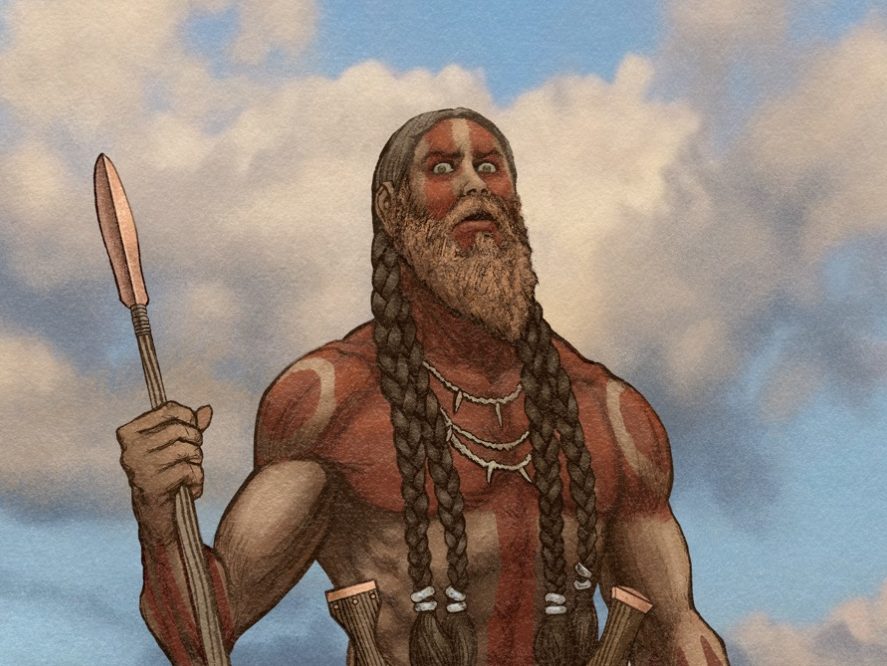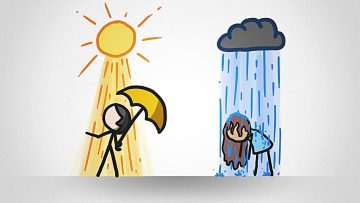
You like milk? How about horses? The English language? Well you can thank a race of tall, jacked barbarians who were tearing about on the steppes of Eastern Europe 5000 years ago for all of these things. In fact, British people take about 47% of our DNA from these people geneticists call ‘Western Steppe Herders’, which is nearly the same amount you got from your mum, but do you send the barbarians a card at Christmas? No, because you only think of yourself.
These steppe herders are identified with several cultures by archaeologists, the most famous of which is called Yamnaya, which is a Russian word referring to the pits they buried their dead in. They are also called Kurgans (yes, the baddie in Highlander) because they built huge barrows over the pits, and the Russian word for barrow is kurgan. The round barrows of the British countryside have their origin in the steppes too. The Yamnaya and related peoples from the steppe galloped across Europe, raping and pillaging as they went, and spreading their language which is known by linguists as Proto-Indo-European. That’s why Indo-European languages like English, Spanish and Hindi are spoken as a first language by 46% of all people on Earth today.
CGI interpretation of the facial structure of the Yamnaya/Indo-European Steppe warriors (Credit: Robert Molyneaux)
For years experts have argued about how these mysterious pastoralists, who the Daily Mail called “the most violent people who ever lived”, had such an advantage over their neighbours that they were able to wreck them so utterly. Their skeletons show they were tall, hefty blokes, and a recent genetic study on modern Estonians revealed that Yamnaya-like genes were associated with higher rates of cholesterol (which results in more testosterone), stronger bodies and wider hips and waists. We wouldn’t have big lads like Eddie Hall or Tyson Fury if it wasn’t for our Steppe Herder ancestors.
Another study found that many of these absolute units could drink raw animal milk into adulthood, which, as any body builder will tell you, is an incredibly rich source of protein, healthy fat and growth hormones. Linguists have also pointed out the Proto-Indo-European vocabulary included words for wheels, wagons, horses and dairy products which makes sense since their burials often contained sacrificed horses but it is debated whether or not these were wild horses or tame ones that could be ridden into battle.



But we are finally closer to understanding them thanks to a new study from scientists at the Max Planck Institute for the Science of Human History in Germany. They looked at pottery from the eneolithic and early bronze age in the Pontic-Caspian steppe, a place already identified as the potential origin of modern domesticated horses, and the genes that allow us to digest milk in adulthood. They didn’t find any milk proteins in the oldest pots, but when it came to the Yamnaya era pottery, 15 out of 16 samples contained evidence of dairy from sheep, cows and even horses.
The Eurasian steppe, a broad belt of grassland, extends from about 6,000 miles from the Pacific Ocean to the Hungarian Plain. This was the homeland of the Yamnaya.
Trying to milk a wild animal is an effective way to obtain rapid hoof-based facial reconstructive surgery, but a bad way to get milk. Therefore it is safe to say the horses were domesticated, but we still can’t say for sure whether the Yamnaya could ride them. The fact that a single Yamnaya burial can contain as many as 40 horse sacrifices shows they bred them on a large scale. They also had huge herds of cattle which they drove across vast grasslands.
Trying to milk a wild animal is an effective way to obtain rapid hoof-based facial reconstructive surgery, but a bad way to get milk.
In Australia this is done today with helicopters, whereas prior to the Aussie sky cowboys, a man could only manage a herd of galloping cows and horses by riding on a horse himself. Yamnaya people were semi-nomadic; living out of tents and wagons, following their herds from winter to summer pastures each year. A cumbersome wooden wagon drawn by oxen will never be able to keep up with a herd of horses so surely they must have ridden horses too in order to keep up with the herd and that means these were probably the first humans to ride horses.

It is likely that all modern horse breeds descend from Yamnaya horses, just as all Europeans (and some Asiatic peoples) descend from Yamnaya-like steppe pastoralists. They couldn’t read or write but their language became Ancient Greek, Latin, Iranian and the holy language of ancient India, Sanskrit. We hear them in our own words, and we see them in each-other’s faces yet we are only just beginning to realise how important these people were to the history of mankind. So do thank them next time you pour milk on your corn flakes and for God’s sake remember the Christmas card this year.
For a more in-depth journey through the fascinating Indo-European Yamnaya peoples, watch Tom’s video here:



3 Comments
Fascinating article! Thanks.
Amazing people. What an interesting article. MORE PLEASE!
Really well written and great fun. Lovely little read on a wet Sunday morning